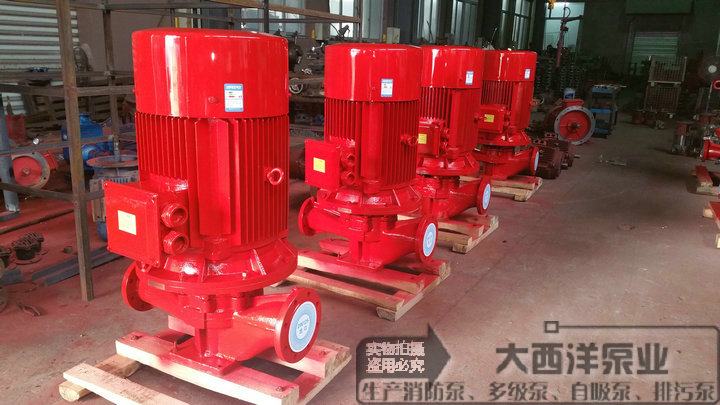Thermal damage of fire pump mechanical seal
The failure caused by the overheating of the fire pump mechanical seal is due to thermal damage. We often see thermal damage due to end face thermal deformation, thermal cracking, blemishes, carbonization, loss of elastic elements, and aging of rubber parts. Permanent deformation, cracks, etc.
The high temperature environment may reduce the elasticity of the elastic element, so that the sealing force of the sealing end surface is insufficient and the leakage of the sealing end surface is serious. High temperature loss of metal bellows is a common and typical form of failure of such mechanical seals. An effective way to avoid this type of failure is to choose a reasonable bellows material and apply proper heat treatment. Atlantic pump fire pump medium temperature is an important reason for rubber seal aging, cracking and permanent deformation. Aging of rubber shows that the rubber becomes hard, the strength and elasticity are reduced, and cracking occurs in severe cases, resulting in the loss of sealing performance. Overheating also decomposes and even chars the rubber component. In hot fluids, there is a danger that the rubber ring will continue to vulcanize, eventually causing it to lose its elasticity and leak. Permanent deformation of rubber seals is usually more severe than other materials. The Atlantic pump seals have long been at high temperatures and will become the same shape as the grooves. When the temperature remains the same, it can also play a sealing role; but when the temperature is lowered, the seal rings will quickly shrink, forming a leak path. Leakage.
The thermal deformation of the sealing surface of the fire pump has local thermal deformation and overall thermal deformation. Many small hot spots and isolated discolored areas are sometimes found on the sealing face, which indicates that the seal has undergone local deformation distortion under the influence of high pressure and heat; sometimes a symmetrical and discontinuous bright band on the sealing end face is found. It is due to irregular cooling that causes local thermal deformation of the end face. It is sometimes found that the seal face wears very badly on the inside, and the larger the radius, the shallower the contact mark until it is indistinguishable. The inner edge of the Atlantic pump seal ring may show chipping and chipping. When the shaft rotates, the seal continues to leak, and when the shaft is at rest, it does not leak. This is because when the seal is working, the outside cooling is sufficient, and the inside frictional heat is severe, so that the inside thermal deformation is larger than the outside thermal deformation, and the inside contact type (positive taper angle) end surface caused by thermal deformation is formed.
Therefore, we should pay attention to the use temperature of various types of rubber, and should avoid the use of fire pumps for a long time at extreme temperatures.

Solenoid Valve,Water Solenoid Valve,Gas Solenoid Valve,Electric Solenoid Valve
Wuzhong Instrument Co., Ltd. , https://www.wzivalve.com
